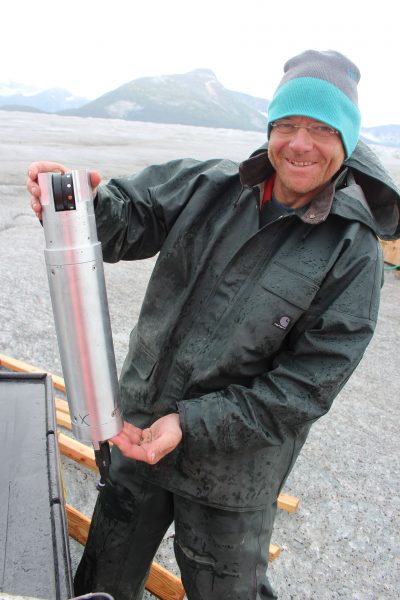'Game of Thrones' ice can't stand up to Antarctica's
December 11, 2017
Meghan Murphy
907-474-7541

University of Alaska Fairbanks professor Martin Truffer likes science fiction but never thought he would be presenting a poster about it at the American Geophysical Union Fall Meeting.
The glaciologist was going to AGU anyway to talk about a tool he helped improve to better analyze how the ice and till at a glacier’s base flow downhill.
Then graduate student Chris Carr noticed that AGU was hosting a poster session called “The Science of Fictional Worlds.”
“Wasn’t there an article in Wired Magazine where you talked about whether the great ice wall in the 'Game of Thrones' was possible?” the graduate student asked Truffer.
Yes, indeed.
“That would be perfect for this session!” she exclaimed.
In 2013, a journalist from the monthly called Truffer to talk about the feasibility of an ice wall 700 feet tall, 300 feet thick and 300 miles wide. Fast forward four years later, and Truffer will expand on his answer in a poster at AGU, even though he has yet to do this one thing: “I really should watch the show,” he said.
If he had, he would realize the profound importance of this magical wall in the fantasy TV drama “Game of Thrones.” The wall protects the Seven Kingdoms from the dangers lurking northward, such as ice creatures, wild peoples, the souls of the dead and perhaps eternal winter.
While many Alaskans would probably love a poster challenging why fictional Norths often harbor bad mystical things, Truffer is challenging the idea of the wall itself.
“Ice deforms under its own weight, and 700 feet is a lot of weight,” he said. “That’s way more stress than the ice would be under in the Antarctic ice sheet.”
Unlike the wall, Antartica’s weight is distributed over a much larger area. He also said that sheer ice cliffs of 700 feet simply don’t exist in nature. A 300-foot cliff is extreme even for glaciers that regular calve ice into the ocean.
If the laws of nature applied, then ice cliffs and the wall would share the same Achilles' heel — differential pressure. He explained that the ice wall would be under tremendous pressure, while the air next to it would not.
“If you have atmosphere next to ice with a 700-foot load on it, that ice would flow out like butter,” he said. “The ice would flow out faster than you could put the next ice block on.”
Truffer said this very same problem dashed British and Canadian ambitions to build an aircraft carrier out of ice and wood pulp during WWII. They had wanted a floating, unsinkable island to extend the reach of land-based planes that couldn’t fly far enough into the Atlantic to battle German U-boats.
But it soon became clear that the ice would deform under its own weight and flow out.
Truffer said the ice wall in "Games of Thrones" might stand a better chance if gentle slopes of ice buttressed it, but then this would make it easier for dangerous creatures to climb the wall.
Cold year-round temperatures of at least 40 below could slow the flow of ice, but, even then, those who guard the wall would need to constantly maintain it.
Of course, fans of the show know that those guarding the wall, the Night’s Watch, have been dwindling.
And some fans are wondering if the ice wall might soon come tumbling down, although it’s probably doubtful that the laws of physics are weighing greatly on their mind.
Although scientific advances in understanding glaciers and climate change are weighing on Truffer’s mind this week, he said it’s fun to talk science fiction. Nevertheless, he heard the poster session was a bit controversial.
“Some people think AGU should just be about serious science, and, clearly, poster sessions like this shouldn’t be the focus of AGU,” he said. “But it’s a long meeting — a week long. So why not throw in a little fun?”
Martin Truffer’s science fiction pick:
"I like the book 'Anathem' by Neal Stephenson.
It plays on a planet that’s Earth-like and highly advanced, but science is preserved
in these things that are like monasteries. They have a complicated system of how scientific
knowledge is preserved and disseminated to the public.
The book combines ideas in physics with concepts from Greek philosophy. The plot is
quite intricate; it's an amazing piece of work. Of course, I also don't mind the occasional
physics joke in there."


